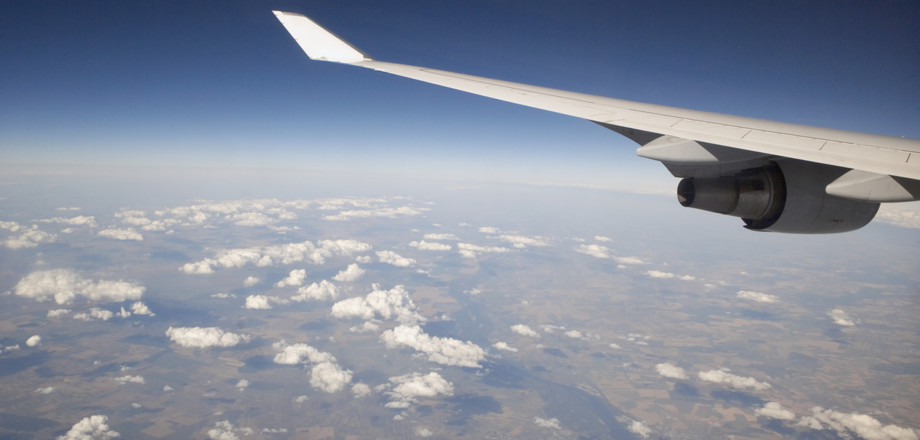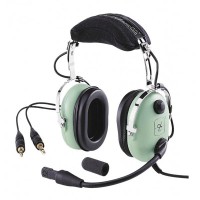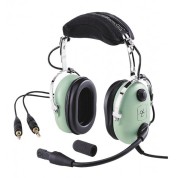Advice on buying Aviation headsets
Do I really need to buy my own headset?
When starting out on learning to fly, on the initial first few lessons the Training School will likely loan you a headset. These will not be of the best quality and will have been heavily used in the past. They seldom fit well and the quality of the audio will not be the finest. Even if they have been sanitised it is not desirable to have to use a headset that has suffered some years of perspiration and respiration. As soon as you have decided that flying is for you it will be best to buy your own headset. Even if you can only manage an entry level basic model, if its looked after it will suffice until you can consider a more desirable model.
What to look for when choosing an Aviation Headset.
Once you have decided to make the leap into buying your own first headset there are many points to consider. Of course cost could be a guiding factor. Also there are many features and variations on many themes. Below are some of the many.
- Type of Noise Reduction
- Comfort
- Headset Style
- Noise Reduction Level
- Frequency Response and Quality
- Stereo or Mono
- Microphone Type and Boom Mounting
- Cable Plug Type
- Bluetooth capability
- Expected duration of flight time
- Budget
- Warranty
Type of Noise Reduction
There are 3 types of Noise Reduction on Aviation Headsets.
The basic type is called Passive and is the most common type found within General Aviation. It is simply down to the quality of the materials used in the construction of the ear cup and the seals that mould to the shape of the head.
Active Noise Reduction is a step further and employs all the characteristics of the Basic type and also has extra electronic circuitry that picks up the unwanted audio and generates a identical audio signal that is 180 degrees opposite and applies this to the audio signal thus cancelling out most of the noise.
Dynamic Noise Cancelling. This is a step further still employing all of the above together with digital processing circuitry that monitors the audio signal and searches out the repetitive noise signals like engine noise and digitally attenuates these parts of the signal.
Comfort
An ideal headset would be one that you cannot feel on your head; this would be utopia of course. That said a heavy headset with high clamping force will become very uncomfortable within a short time. Often lightweight headsets are constructed using plastic. This is fine but will need to be treated with great care as if accidentally sat on may not survive. Sprung steel headbands with ear cup supports often work well and are a good compromise against weight and strength. Gell ear seals are also a good consideration as they provide good ear cup to head sealing, they are slightly heavier however. Cotton covers for the seals are good in high temperature environments assisting with perspiration.
Headset Style
The common type would be the Passive over Ear design that encompasses Ear Cups that fully cover the ear. This provides good passive noise reduction and can also have Active Noise Reduction as well.
The On Ear design possibly has better comfort especially over long flying sectors but has less well Passive noise reducing characteristics, This design often has Active Noise Cancelling employed and will often be found in Commercial Airline Jets.
In Ear plugs, these are less common but often used by aerobatic pilots as the soft inserts plug into the ear canal and heavily reduce outside noise, good for noisy big engines. Small tubular speaker inserts are then used within the plug and provide the audio signals
Noise Reduction Level
Noise levels are measured in Decibels. Look for the highest db rating of attenuation you can find.
Frequency Response and Quality
The aircraft environment is quite hostile from a noise point of view. Frequencies of 300 hertz will mostly come from the engine while frequencies above 3000 hertz will be down to airframe and airflow. Look for a headset that has good Noise attenuation levels over the widest frequency band.
Stereo And Mono
Strangely the option of Stereo comes up despite very few aircraft having a stereo facility. Many headsets have the capability to offer this option, but it is not well understood. Firstly there are no Stereo ATC transmissions, or Stereo Aircraft receivers. Some aircraft have the facility to listen to IPod connected audio through the aircraft intercom. While this may be fine for long sectors across the Atlantic it’s not good to be listening to the Bee Gees while ATC need to warn you of closing traffic at the same altitude!! Also if you connect a stereo switched headset to a Mono aircraft it will only operate in the left ear. It will need to be switched to Mono to operate correctly in both ears. Only a handful of executive jets have proper Stereo capability. Stereo is not a selling point for aircraft headsets.
Microphone Type and Boom Mounting
Most microphone types employed today in aviation tend to be amplified electret types. There are also amplified dynamic types. Both work well with electrets being the smaller of the two. Microphone booms can range from Chrome Wire Supports to Full Flex Goose neck varieties and sometime a combination of both. This comes down to personal preference.
Cable Plug Type
Most General Aviation aircraft applications use the Twin Plug configuration. There is also an American Nexus 4 pole plug common in Helicopters, and also a UK NATO 4 pole plug on Helicopters of UK Design or Military. None of these are compatible with each other. There are adapters available that will allow one type to be used with the other. Available as a retro fit on older aircraft or now as standard on new aircraft is the Lemo plug, this is a small round plug usually with 6 pins that covers mic, audio and power for ANR, all in one plug. Commercial Airbus aircraft use a larger XLR plug; this is not found in G.A. aircraft.
Bluetooth Capability
Bluetooth is a technology that has appeared in recent years as an addition to aviation. Initially being useful to connect a phone for use whilst airborne. Most recently with the addition of proximity alerting systems and airborne alerts from systems like Sky Demon, Bluetooth has become more desirable. There are adapters available that we can fit to any headset that will cover this requirement.
Expected duration of flight time
For short flying periods a headset of basic quality may prove to be fine. However sectors over 2 hours may prove to be fatiguing. If you expect to fly long sectors then a comfortable headset is a must.
Budget
This of course is down to the individual, If your budget is tight then initially it may be best to spend your hard earned cash on getting the lessons covered and simply buy a budget or fully reconditioned David Clark Headset. We have a variety in stock all fully rebuilt and guaranteed.
Warranty
Brand new headsets can come with warranties from 1 to 5 years or longer. Our reconditioned headset come with a full year covering all parts and labour. You can also try before you buy. All advice is free.
Please call 07910253970 we can chat through all options with you.




